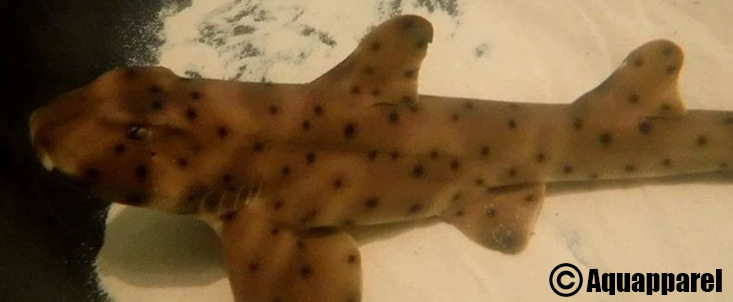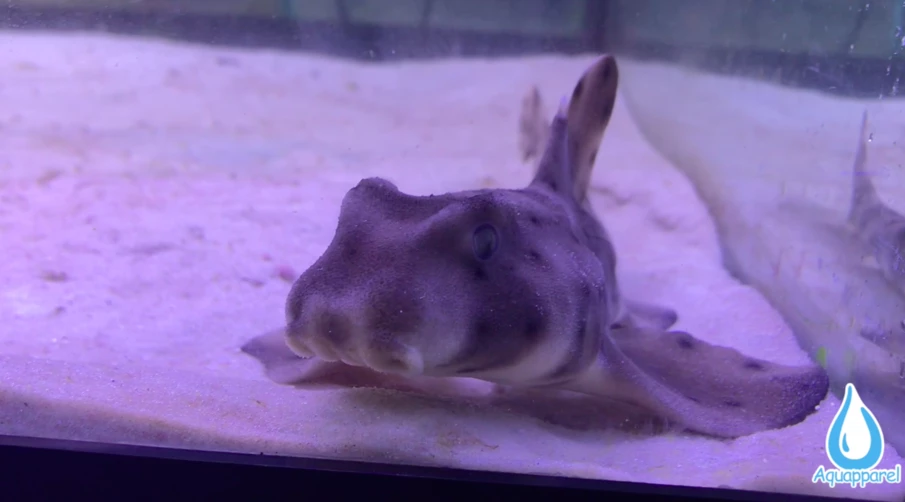The Horn Shark gets its name from its short, blunt head with high ridges above their eyes.

They have 2 spikes that they use for protection on their first and second dorsal fins which you can see on Link below.

The Horn Shark belongs to the Heterodontidae family. Here are some interesting facts about the Horn Shark:
- They are found on the west coast of North America from California to the Gulf of California
- They are primarily loners. They spend their entire life in a area no larger than 3,300 square feet. In the wild they will migrate to deeper water in order to stay warm during the winter, but they have never been recorded to travel more than 10 miles away from their home.
- Their maximum length as adults is 2 to a little over 3 feet. The males are typically smaller than the females.
- The spikes on their dorsal fins are used for protection. With their small size and tendency to be alone, they can become easy prey to larger species of sharks and fish. These spikes prevent a larger animal from being able to bite down on them.
- The spikes are said to be mildly venomous as well although not very much is known about the venom from what I could find while researching. However, getting stuck by one of these spikes can be extremely painful and will deter a larger predator from consuming the horn shark.
- These sharks are pretty slow, sluggish and stay mostly on the bottom of the sea bed.
- They have a pretty gnarly jaw which they use for crushing small crustaceans and bony fish which they eat quite a bit of.
- The Horn Shark is oviparous. The females can lay up to 24 eggs that look like this during their spawning season. The ridge that runs along the outside of the egg in a spiral allows the mother to wedge the egg in the crevices of rocks in order to keep them safe until they hatch.
Generally these sharks are not a threat to humans but when harassed they have been known to bite. So unless one of these sharks are used to humans handling them and will allow you to pet them, I would advise against it.

The Horn Shark’s IUCN Red List status is data deficient with the last assessment from March 6, 2014. They are known to be discarded when caught as by-catch. In Mexico this species is used for food and fish meal, and in California its spines are made into jewelry. They are regularly bred in captivity so hopefully a wild population study is done soon and if their species needs assistance recovering, a plan will be put in place to assist them.
Let me know in the comments below which public aquariums have this species on display so that if anyone who is watching this wants to see one in person they can.
Before you make the decision to try to find one of these sharks to keep as a pet, be sure to watch the video below.
If you would like to learn even more, consider enrolling in my online course here: Aquarium Sharks For Beginners
